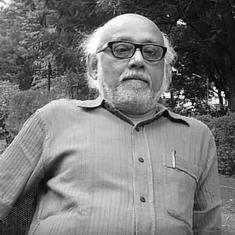Adelaide 2015: As darkness descended over the Adelaide Oval, there was a cloud of gloom over English cricket as well. Embarrassed by Bangladesh in the group stage, ousted from the ODI World Cup before the business end – it was another shocking tournament for England.
Something needed to change. English cricket looked inwards. The blueprint was there, borrowing from the 2010 T20 World Cup in the Caribbean, its only triumph since the advent of white-ball cricket. Hard calls were made, and Eoin Morgan began leading a tough rebuilding job.
The rest, as they say, is history.
***
Despite Morgan’s retirement, and absence of some star names, England arrived at the ICC Men’s T20 World Cup 2022 as favourites. The report card he left behind made for fascinating reading – runners-up in 2016, semifinalists in 2021, and in between, that elusive ICC Men’s ODI World Cup win in 2019. He did more though, something not discernible from statistics and trophy counts. Under Morgan’s reign, England imbibed an enthralling, aggressive style of white-ball cricket, fearless even, and have never looked back since.
Ask yourself if you believed India went into this semi-final as favourites... and be honest about it. Based on the brand of cricket we had seen, that answer ought to be a resounding no. England’s brand of white-ball cricket stood tall. In its shadow, India went into this semi-final not only as second best, but also with flaws emanating at every nook and corner of their dressing room.
From out-of-sync openers, to over-dependency on Virat Kohli and Suryakumar Yadav, to trusting Dinesh Karthik and then not trusting him, to thrusting Rishabh Pant in semi-final limelight, to the pacers getting smashed around by Bangladesh at this venue and not having a plan B, to the lack of form of India’s chosen spinners, and to the relegation of Yuzvendra Chahal to the bench... the pointers have all been there during this campaign.
We just chose to ignore them. Because Kohli got a hundred at the Asia Cup, got back to form, and performed magic against Pakistan at the MCG. Because Suryakumar Yadav played some breathtaking cricket and finds himself deservingly atop ICC’s T20I rankings. Because rain played a part in India beating Bangladesh. Because India qualified top of their Super 12 group.
Because, ultimately, the mere thought of another India-Pakistan final at the Melbourne Cricket Ground was very enticing. Like our archrivals’ fan base, we were also happy in romanticising the past (2007, for our reference). We perhaps ignored England’s underlying strength because they lost to Ireland by mere chance.
Be it former cricketers, selectors, board officials and administrators, journalists, broadcasters or simply viewers, whether at home or here at the ground... a hopelessly romantic fan resides in all of us.
***
It all went horribly wrong, almost beggaring belief, but makes for some wonderment too. Surely, everything cannot be wrong with this Indian team. They are highly rated professionals after all, earning multi-million contracts in the world’s most lucrative T20 event – the Indian Premier League.
Well, here’s what skipper Rohit Sharma had to say about the IPL after this semi-final exit. “We were nervous to start with. All of our guys have played enough IPL games to know how to handle pressure situations. It’s all about keeping calm.”
It was a staggering statement, when you think about it.
***
Ah, KL Rahul. He is a walking paradox in guise of a batter. Back-to-back half-centuries go meaningless when he goes out to bat. Whether in form or not, light pokes at outgoing deliveries are always in vogue. Whatever happened to going hard at the ball? Surely, former coach Ravi Shastri had drilled it enough into their heads.
Of course, this isn’t about Rahul alone. In truth, Sharma had more share of the blame on this particular day. Blessed with sublime timing and those extra seconds to play his shots, Sharma seemed a parody of himself. He struck a handful boundaries to remind us of his old self. Rest of the time, he just struggled to put bat to ball.
That opening stand, and the top-order’s start, was key to India’s woes. 38/1 in the powerplay is a recipe for disaster even on used pitches in a semi-final. In comparison, England smacked 63/0 in its first six overs.
#T20WorldCup #INDvENG
— The Field (@thefield_in) November 11, 2022
Yet again in a big match, India's batting approach was too conservative and they paid the price.
✍️ @aditya_c19
Read: https://t.co/WuQJZuXMtL pic.twitter.com/LPd4mkYpBK
Did you still have hope beyond that point? Jos Buttler and Alex Hales gave out a sermon in the futility of optimism.
The first lesson in T20 cricket is power-hitting. India delved into the matter for 12 months and played lights-out bilateral cricket in the garb of experimentation. Both the skipper and the coach talked up aggression, and yet it all came to nought when it mattered most.
India were unbeaten in every bilateral series in the last 12 months, they said. Before this World Cup, they had won 30 out of 41 T20Is, they said. Surely, this newfound adventurous approach at the top is working, they said.
So, what happened now?
***
Even Virat Kohli or Suryakumar Yadav couldn’t play a rescue hand on this fateful night.
Prior to the game, we exulted in Kohli’s glory. We wondered how England would stop Yadav, if at all they could. The fan in us faltered again.
As it turned out, the English plan to stop Kohli and Yadav was a simple, yet effective one. Their number one spinner, Adil Rashid got early into the act. He strangled the scoring rate, with Sharma and Kohli unable to get away. And it resulted in Yadav holing out too. He had to go for the big shot, waiting for the straighter delivery after Rashid kept cramping him for room.
Rashid’s spell of 4-0-20-1 was staggering. By rights, India should have dominated him, using Rishabh Pant against spin. It didn’t even materialise, of course. Even Liam Livingstone slipped in three overs for 21. In all, they bowled seven overs for 1/41. It was priceless spin bowling at an Australian ground with the shortest boundaries.
Rahul Dravid on India’s semifinal exit – ‘Outplayed, outclassed in all departments’
And here’s the crux of it all. In a match where England didn’t even bother calling up their only finger spinner Moeen Ali into service, using their two wrist spinners (one of them part-time) to good effect, India relied on two finger spinners instead. R Ashwin and Axar Patel were duly ripped apart – 57 runs in six overs.
IPL, eh? With 166 wickets in 131 matches in the celebrated league, Yuzvendra Chahal is the country’s most successful wrist spinner in recent years. But he is still waiting to play his first T20 World Cup game after all this time. He wasn’t even picked in the squad for the UAE tournament last year. Twelve months on, he was just another tourist in Australia.
***
98/0 in 10 overs. 108/0 in 11. 123/0 in 12. 140/0 in 13. 154/0 in 14.
At some point during that record-breaking partnership, Buttler-Hales started toying with the Indian bowling. India’s fielding had already been reduced to a circus. You wondered if they would have mercy and slow down. Just slow down.
Even in football, when a team goes up 4-0 or 5-0 in the first half, the manager tells them to take it easy in the next 45 minutes. Embarrassment in sport is hurtful. England never stopped though, even when Indian fans started walking out.
In just over 12 months, India have now suffered two 10-wicket losses in the T20 World Cup. The wounds of that 2021 loss to Pakistan had just about healed, when Buttler-Hales reopened them with a touch of salt to boot.
With bat or ball, from one powerplay to the next, from power-hitting to spin bowling, from new ball to death overs’ bowling, to simply fielding, it was a complete coaching clinic. From England to India, a lesson in T20 cricket. Period.
In Jos Buttler’s words before the semifinal, ifAdelaide 2015 was considered a line-in-the-sand for English cricket, seven years on, they displayed amply and spectacularly how that challenge has been met.
Now, the question to ask here is this. Another ICC event, another semi-final – is it satiating enough for the powerful, money-laden corridors of the BCCI? Or, is this loss finally that proverbial line-in-the-sand for Indian cricket?
***










